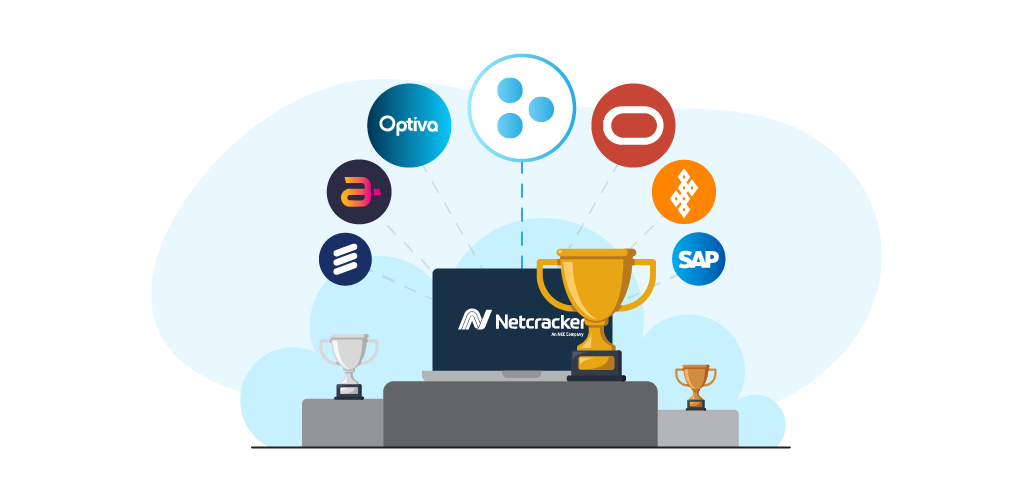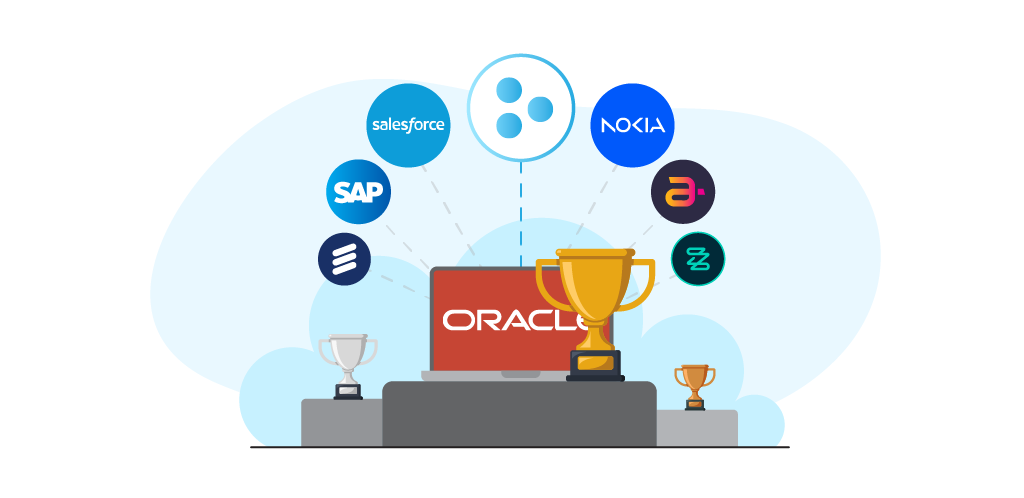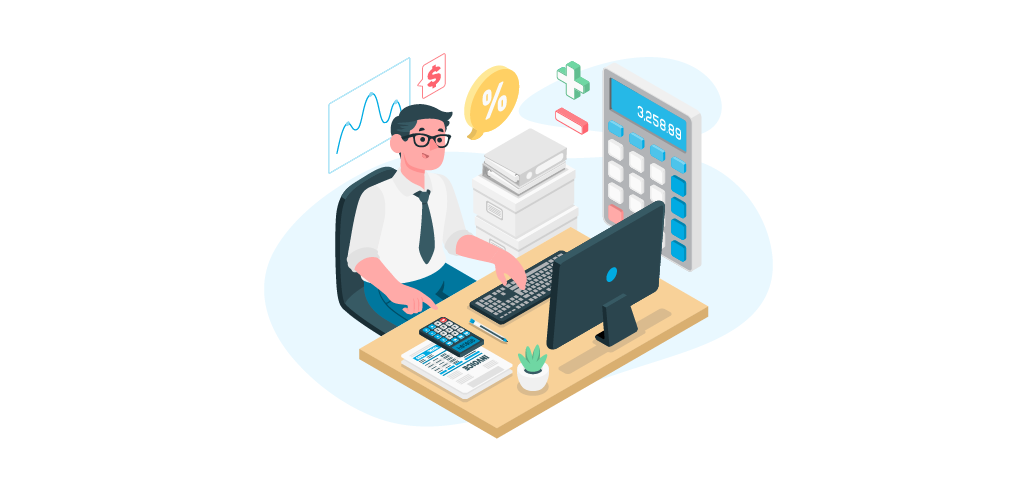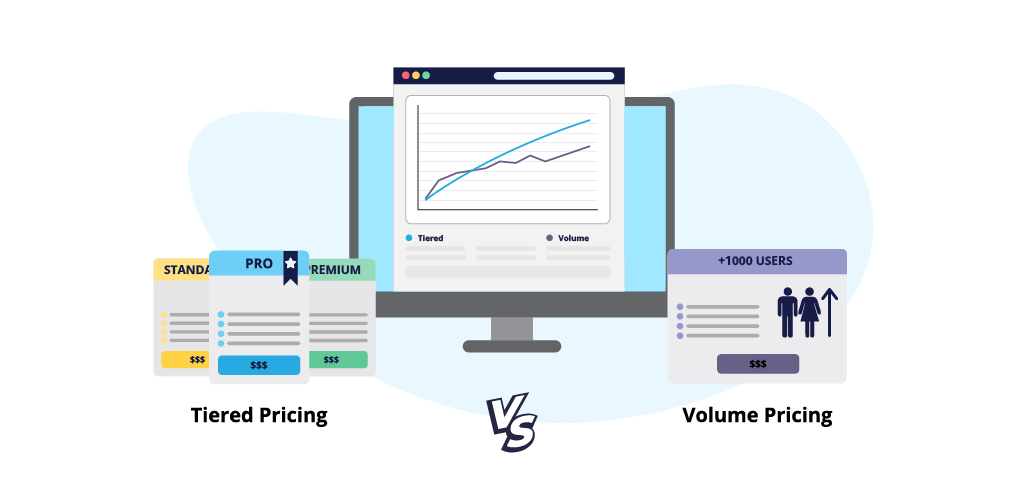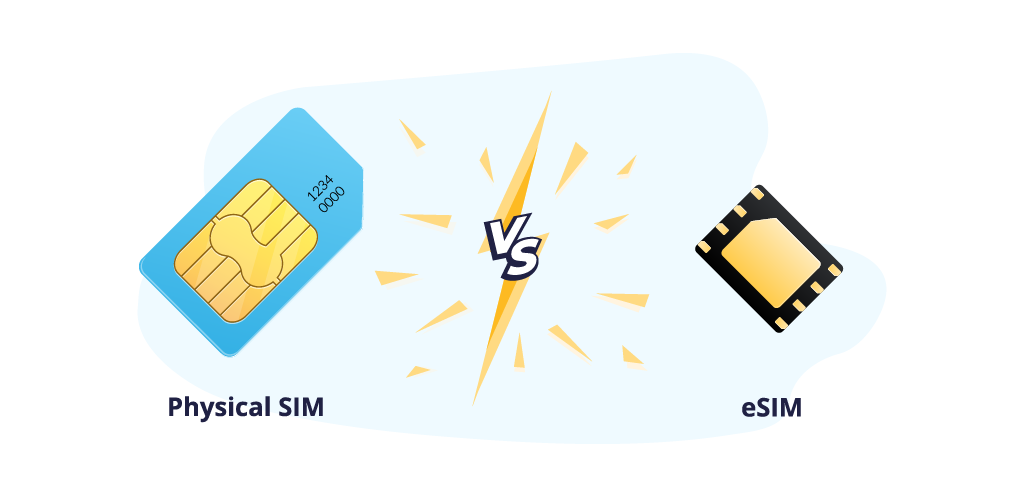Learn how automated billing systems work, how they help businesses grow revenue, reduce manual tasks, and increase customer satisfaction.
Table of contents
- What Is A Billing System?
- Legacy Vs. Modern Billing Systems
- Why Businesses Need A Modern Automated Billing System
- Small Business & Enterprise Billing Systems
- Industry Applications
- Key Features Of Modern Billing Systems
- Advanced Features Of Modern Billing Systems
- Common Billing Challenges & Solutions
- How To Choose The Right Provider
Subscription models are on the rise, but most companies still process invoices manually.
With 44% of companies saying their legacy systems are a barrier to growth.
And an additional 59% of companies citing significant customer friction due to billing disputes.
It’s clear that legacy systems cannot handle the nature of modern billing needs.
In this blog, I will explain what modern billing systems are, how they work, why you need one, and how to choose.
What Is A Billing System?

A billing system is complex software that creates and automates payments, invoices, revenue, and much more.
At the core is Revenue Management, which handles everything from customer and product catalog management to billing, finance, and analytics.
It ensures that every transaction, discount, or subscription is processed accurately and in real time.
The Charging Engine powers usage-based and real-time pricing — perfect for industries like telecom, EV charging, and digital services.
These systems integrate seamlessly with CRM, ERP, payment gateways, and taxation providers.
Convergent billing systems combine all service charges (postpaid, prepaid, subscriptions…) into a single customer invoice.
Think of it as a bridge between the “Billing & Invoicing” and “Charging Engine” blocks in the picture above.
This improves data management and is convenient for both you and your customers.
With notifications and event streaming, businesses gain insights, automated alerts, via SMS, email, or analytics dashboards.
This cloud-native API-first architecture supports 5G, IoT, and digital ecosystems.
Activation, controlling, rating, invoicing, dunning, and collections are part of a good online billing system.
Legacy Vs. Modern Billing Systems
Modern automated billing systems are not just upgrades — they’re enablers of new business models.
Companies can configure, scale, and monetize any industry and service in real time without code.
| Feature | Legacy Billing Systems | Modern Billing Systems |
|---|---|---|
| Infrastructure | On-premise, hardware dependent | Cloud-native, API-driven, SaaS |
| Maintenance | High-cost, requires professionals and manual updates | Automatic updates, zero downtime maintenance |
| Integration | Proprietary APIs, compatibility issues | Integrates easily with CRM/ERP, OpenAPI |
| Scaling | Manual, hardware scaling | Automatic on-demand scaling |
| Cost | CapEx heavy, hardware, licensing, unpredictable | OpEx oriented, predictable |
| Time to Market | Months to years | Weeks |
| Customer Experience | Limited control, slower, reactive | Insights, full control, proactive |
Why Businesses Need A Modern Automated Billing System
As we previously mentioned, businesses use billing systems to generate and send invoices to their customers or partners and receive payments.
Consequently, the billing system helps companies improve performance and reduce errors by automating document preparation and other routine tasks.
Here are some benefits of a modern billing system.
Cost & Time Saving
In my opinion, this is the most attractive benefit.
No more spreadsheets. No more manual invoice runs.
Automation handles repetitive tasks so your team can focus on growth.
You save by:
- Reducing manual data entry and human error.
- Automating recurring billing and payment collection.
- Cutting down on IT maintenance costs.
- Scaling without employing workers.
What used to take days now takes hours or minutes.
Scalability
Your billing system should grow as your business grows.
And adding new products, customers, or services shouldn’t be a headache for your team.
Modern billing platforms scale instantly — no downtime, no manual upgrades.
Scalability means:
- Handling millions of transactions in real time.
- Adding new products or services without reconfiguration.
- Supporting global expansion with multi-currency and multi-language options.
- Elastic cloud infrastructure that adjusts to demand.
Scalable billing keeps your operations smooth, even during peak usage or new market launches.
Flexible Billing Models
Today’s market demands flexibility.
Modern systems let you adapt billing to your business model, not the other way around.
Supported models include:
- Subscriptions (monthly, yearly, freemium).
- Usage-based billing (pay-per-use, metered).
- Hybrid models (fixed + variable).
- Dynamic or time-of-day pricing (perfect for energy and EV charging).
Flexibility in billing helps you capture more revenue, personalize pricing, and respond quickly to customer or market changes.
Automated Invoicing
Around 57% of invoices are entered manually.
Additionally 37% of businesses send out paper invoices.
Source: Skynova
Invoices shouldn’t require manual work.
Modern billing systems automate invoice generation, distribution, and reconciliation.
Everything happens in real time.
Automation enables:
- Instant invoice creation based on usage or subscriptions.
- Automatic dunning and reminder workflows.
- Integration with payment gateways for faster cash flow.
The result is predictable revenue, fewer late payments, and less manual work.
Revenue Recognition
Manual calculations often lead to errors and compliance risks.
Automated billing systems handle revenue recognition in line with standards like IFRS 15 and ASC 606 — automatically.
Automated billing systems manage:
- Deferred revenue tracking.
- Recognition schedules for product or service.
- Accurate accounting for usage-based or hybrid models.
- Instant reports for audits and compliance checks.
That means your books are always right, your team is audit-ready, and finance has full visibility into real-time revenue.
Small Business & Enterprise Billing Systems
Different business sizes have different requirements.
Small businesses might prioritize simplicity and ease of setup, to increase time to market.
Enterprise businesses require speed, scalability, and compliance assurance.
Around 86% of small businesses enter invoices manually.
While 65% of enterprises use automatic invoice entries.
Source: Skynova
Manual invoices are the standard for small businesses, while automated invoices are the standard for enterprises.
It shouldn’t be this way.
Small Business Billing Systems
Small businesses should focus on simplicity.
You don’t want to spend too much time on training and setup when you should focus on growth.
Key traits of a billing system for small businesses:
- Easy setup and intuitive interface.
- Low monthly cost.
- Pre-configured templates for invoices and subscriptions.
This gives you time to focus on growth and marketing and requires minimal IT involvement and knowledge.
However, you may encounter a problem once you need more unique features or a higher level of customization.
Simple billing solutions can limit you if you work with different customer groups who need different treatments.
Enterprise Billing Systems
Enterprise billing software, is developed by a professional team that designed the software to support any billing use case.
This software can help you tackle all the current problems and challenges your finance/accounting department faces.
Key traits of an enterprise billing system:
- Complete system integration: configurable software will allow you to integrate all services through out-of-the-box integrations, and configurable imports/exports.
- Advanced functionality: the software allows you to set up use-case-specific workflows, targeted analytics, and more to meet your requirements.
- High scalability: modern software has a modular billing architecture. It is scalable to handle higher loads of traffic, allowing you to expand without worrying about limitations.
Consider the limitations of your current billing system and your business goals.
If you think your business could benefit from a new billing system, adopt custom billing software instead.
Tridens Monetization offers a platform for any industry model. Paired with a white label self-care app for your customers and analytics dashboards.
Industry Applications
Billing isn’t one-size-fits-all.
Different industries face different challenges and opportunities.
Let’s look at how modern billing systems transform Telecom, Energy & Utility, and EV Charging businesses.
Telecommunications
Telecom companies require complexity.
Multiple plans, bundles, roaming, add-ons — all changing constantly.
Modern billing systems handle this much more efficiently.
What telecom billing software needs most:
- Convergent billing: handle all service charges on one invoice.
- Real-time rating: charge instantly as usage happens.
- Partner settlements: automated B2B and MVNO agreements.
- Scalability: process millions of daily usage records.
- AI-driven analytics: predict churn, optimize offers.
This leads to faster product launches, lower operational costs, and less mistakes.
Energy & Utility
Electricity and power distribution held 40.93% of the utility billing software market share in 2024.
Source: Mordor Intelligence
Electricity, gas, water, wastewater, sewerage, district heating, solar power, and property management
Smart meters, complex tariffs, distributed generation.
Traditional systems weren’t built for this level of complexity.
Modern utility billing systems enable:
- Ratio Utility Billing System and smart meter integration
- Time-of-use pricing: charge based on peak or off-peak hours.
- Net metering: manage both consumption and generation (solar, wind).
- Real-time consumption insights: empower customers with transparency.
- Regulatory compliance: handle local taxes and market rules.
- Multi-service support: electricity, water, gas under one platform.
For example: A power company can reward households for using energy during off-peak hours — automatically reflected on their next bill.
EV Charging
EV charging is one of the fastest-growing industries — and one of the trickiest to bill for.
Different pricing models, session data, and network partners make it complex.
What EV charging billing must handle:
- Dynamic tariffs: prices based on time, demand, or grid load.
- Flexible pricing: per kWh, per minute, or session based.
- Roaming support: unify billing across different charging networks (OCPI, OCPP).
- Subscriptions & pay-as-you-go: serve private drivers and fleets alike.
- Revenue sharing: between CPOs, EMSPs, and partners.
This gives transparent real-time charging costs and automated settlements between different operators.
Tridens EV Charge is designed for a diverse range of clients including EMSPs, CPOs, EVSPs, EV fleets, automotive companies, and manufacturers.
Key Features Of Modern Billing Systems
Choosing a billing system isn’t just about sending invoices.
It’s about finding a platform that can grow with you, adapt to change, and give you control.
Here are the must-have features every modern billing platform should deliver.
Automation
Manual work reduces productivity and is prone to errors.
This is why automation is the key of modern billing systems.
Automated billing handles:
- Recurring invoicing and subscription renewals.
- Automatic generation of subscription plans
- Payment collection and reconciliation.
- Dunning and reminder workflows.
- Credit notes, refunds, and adjustments.
- Tax calculations and compliance updates.
This leads to faster billing cycles, consistency, and more time for strategic work.
Analytics & Insights
Having a good overlook on what’s happening with your cash flow is key.
This way you see where to optimize and give recommendations.
Modern billing platforms should include:
- Real-time dashboards for revenue, churn, and ARPU.
- Custom reports by product, plan, or region.
- Predictive analytics powered by machine learning.
- Customer segmentation based on usage and profitability.
- In-depth metrics for billing accuracy and performance.
This helps you make decisions based on data and spot issues before they impact your customers.
The figure below shows features that companies want to focus on in the future:
Security & Compliance
When you handle payments, data, and invoices, trust is everything.
A billing system must protect sensitive data and follow every regulation.
Look for platforms that provide:
- ISO 27001, SOC 2, and GDPR compliance.
- Role-based access control and encryption at rest/in transit.
- Secure payment gateway integrations (PCI-DSS certified).
- Automated tax and regional regulation management.
- Audit trails for every transaction.
This way, you don’t have to worry about audits or potential lawsuits.
Advanced Features Of Modern Billing Systems
The features I will mention here are not present in all billing systems.
They are more suitable for enterprise businesses.
However, they also depend on your business model, not only on its size.
Configure, Price, Quote (CPQ)
CPQ technology automates the configuration of complex products, determining accurate pricing based on various factors, and generating customer quotes.
It enables:
- Instant quote generation: Create accurate quotes from predefined product catalogs.
- Real-time pricing: Sync discount structures, usage tiers, and currency conversions.
- Error-free configurations: Prevent invalid combinations or missing components with automated rule enforcement.
- Quote-to-cash automation: Convert approved quotes into active subscriptions, invoices, and payment schedules instantly.
- Analytics for sales teams: Track deal margins, conversion rates, and discount effectiveness directly from the billing dashboard.
A powerful CPQ integration means your billing and sales teams speak the same language.
Automatically configure offers, calculate accurate prices, and generate ready-to-sign quotes.
AI Integration
Artificial intelligence is redefining how modern billing systems operate.
It eliminates manual errors, accelerates processes, and brings predictive intelligence into every transaction.
AI enhances billing precision and decision-making by identifying patterns that are often invisible to human analysis
AI-powered billing can:
- Automatically generate invoices.
- Predict churn and trends based on usage or payment behavior.
- Recommend best-fit plans for each user.
- Detect errors by scanning invoices and previous payment records.
Reducing manual tasks is the goal here, but smarter than algorithmic automation.
Self-Care Portal
A self-care portal empowers customers to manage their own accounts.
This reduces customer support load while improving satisfaction and transparency.
Modern billing systems integrate these portals directly into the monetization platform, giving users full control over payments, subscriptions, and usage insights.
Key capabilities include:
- Real-time billing visibility: Customers can track charges, usage, and download invoices.
- Plan management: Upgrade, downgrade, or pause subscriptions without agent assistance.
- Secure payments: Integrated gateways for instant settlements and stored payment methods.
- Support automation: Chatbots and AI assistants resolve common billing or payment issues.
- Notifications & alerts: Automated reminders for due payments, expiring cards, or plan renewals.
At Tridens we noticed that our programmers were overwhelmed by customer support tickets.
Our Self-Care and Service Desk provides a smoother user experience and offloads work from our staff.
| Feature | Percentage Planning To Adopt |
|---|---|
| Electronic invoicing | 31% |
| Automated data capture and extraction | 27% |
| Full procure-to-pay solution | 26% |
| Automated routing and approval | 25% |
| Electronic payments | 22% |
| Document imaging and scanning | 16% |
Source: Skynova
Common Billing Challenges & Solutions
The more customers with different requests you have, the more complex and difficult billing becomes.
Here are three common billing challenges and how modern billing systems solve them.
Automation Of Processes
Many businesses still rely on manual work.
This leads to long billing cycles, missed invoices, and calculation errors.
How modern billing systems solve it:
- End-to-end automation for invoice generation, reminders, and payments.
- Workflow triggers to handle approvals and collections automatically.
- No-code configuration for faster updates.
- AI-driven accuracy checks to prevent human mistakes.
Automation can be the single best improvement a business can make.
However, implementation takes a lot of coordination since such a drastic change can introduce more disruptions than intended.
Late Payment Management
Late payments are responsible for a quarter of all business failures.
Some common pain points are late or missed reminders, miscommunication, and manual tracking of overdue accounts.
Modern billing systems enable:
- Automated dunning workflows with personalized reminders
- Smart notifications by email, SMS, or portal alerts
- Integration with payment gateways for instant settlements
- Real-time dashboards showing overdue accounts and aging reports
Chasing payments manually drains time and energy.
Data Security Management
When you’re working with customer data, payments, and financial records, security can’t be an afterthought.
Modern billing platforms protect you with:
- Enterprise-grade encryption and role-based access
- GDPR, ISO 27001, SOC 2 certified infrastructure
- Automated audit logs for every transaction
- Continuous monitoring for threats and anomalies
Data leaks or compliance gaps can cost more than missed revenue.
How To Choose The Right Provider
Choosing a billing system isn’t just a software decision — it’s a partnership decision.
The right provider can make your billing effortless.
The wrong one can trap you in complexity for years.
Ask yourself these questions:
- Can I add new products or rate plans in minutes?
- Does the platform support usage-based, hybrid, and subscription models?
- Can non-technical users configure billing logic easily?
- Will I be able to integrate easily with other services?
- Do they provide analytics and insights dashboards?
Modern billing systems are no longer optional — they’re the foundation of scalable, data-driven business models.
Tridens Monetization provides a cloud billing platform solution for subscriptions, consumption billing, or any hybrid business model with complex pricing and billing.
Learn more about Tridens’ billing software here, or schedule a free demo!


